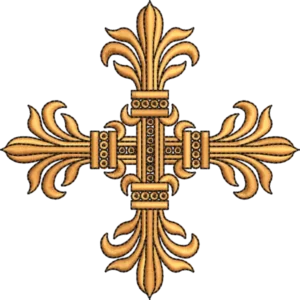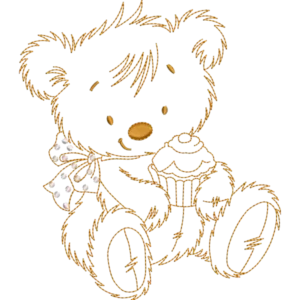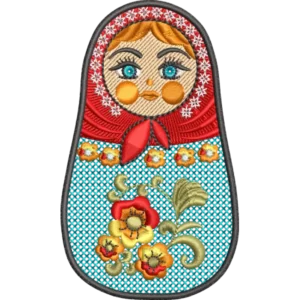Stickerei ist mehr als nur eine schöne Kunstform; es ist auch eine faszinierende Mischung aus Kreativität und Mathematik. Hinter jedem komplizierten Design verbirgt sich eine verborgene Welt mathematischer Prinzipien, die den Entstehungsprozess leiten.
Von geometrischen Formen bis zur Farbtheorie, Stichzahl für Algorithmen, Wenn Sie die Mathematik des Stickens verstehen, können Sie Ihrer Arbeit ein neues Maß an Präzision und Schönheit verleihen.
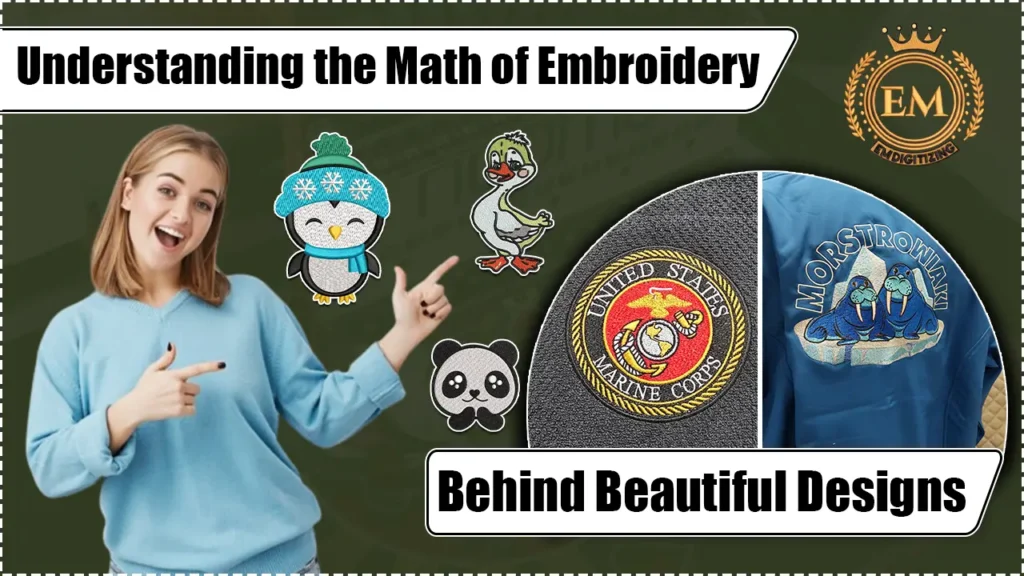
In diesem Artikel, Wir werden die verschiedenen Arten untersuchen, in denen sich Mathematik und Stickerei überschneiden, Entdecken Sie die Schlüsselkonzepte und -techniken, die Ihnen helfen können, das volle Potenzial Ihres Unternehmens auszuschöpfen Stickmotive.
Begleiten Sie uns auf dieser Reise, während wir die Mathematik hinter der faszinierenden Welt der Stickerei entschlüsseln.
Die Mathematik der Stickerei hinter schönen Designs verstehen
Einführung in die Mathematik des Stickens:
Beim Sticken geht es nicht nur um Nadeln, Fäden, und Stoff; es erfordert auch überraschend viel Mathematik.
Bevor deine Augen glasig werden, keine Angst!
We’;re here to break it down in a way that won’;Es wird Ihnen nicht den Kopf verdrehen.
So, Schnappen Sie sich Ihr Maßband und Ihren Taschenrechner, and let’;Tauchen Sie ein in die faszinierende Welt, in der Zahlen und Handarbeit zusammenkommen.
Warum Mathematik beim Sticken wichtig ist?
Sie fragen sich vielleicht, warum Mathematik beim Sticken wichtig ist. Brunnen, Denken Sie so darüber nach: Jedes Stickdesign ist eine visuelle Darstellung von Formen, Muster, und Farben.
Und was ist die Sprache der Muster und Formen??
Sie haben es erraten – Mathematik!
Wenn Sie die Mathematik hinter dem Sticken verstehen, können Sie präzisere Designs erstellen, Verbessern Sie die Stichqualität, und stellen Sie sicher, dass Ihr fertiges Stück atemberaubend professionell aussieht.
Die Rolle der Geometrie in Stickdesigns:
Geometrie kann Erinnerungen an den Mathematikunterricht in der High School wecken, aber wenn es ums Sticken geht, it’;Es ist Ihre Geheimwaffe für die Erstellung atemberaubender Designs.
Let’;Wir erkunden, wie Geometrie in der Welt von Nadel und Faden eine entscheidende Rolle spielt.
Grundlegende geometrische Formen in der Stickerei:
Dreiecke, Quadrate, Kreise – oh mein Gott!
Diese einfachen geometrischen Formen sind die Bausteine für Stickmuster. Durch die Zerlegung komplexer Designs in diese Grundformen, Sie können sie ganz einfach auf Ihren Stoff nähen.

Whether you’;Blumen neu nähen, Tiere, oder sogar abstrakte Muster, Das Verständnis der zugrunde liegenden Geometrie hilft Ihnen, Proportionen und Ausgewogenheit in Ihrer Arbeit beizubehalten.
Einbeziehung von Symmetrie und Gleichgewicht:
Nichts fällt so sehr ins Auge wie ein perfekt symmetrisches Stickmuster. Symmetrie verleiht Ihrer Arbeit ein Gefühl von Harmonie und Ausgewogenheit, was es optisch ansprechend macht.
Durch die Nutzung geometrischer Prinzipien, Sie können sicherstellen, dass Ihre Designs den symmetrischen Wow-Faktor haben.
Von Spiegelbildern bis zur Radialsymmetrie, Die Geometrie wird Sie bei der Erstellung auffälliger Stickereien unterstützen, die ausgewogen und optisch ansprechend sind.
Stichanzahl und -dichte verstehen:
Stichzahl und Stichdichte klingen vielleicht nach technischen Begriffen, die in eine Fabrik gehören, Aber es sind entscheidende Aspekte der Stickerei, die sich auf die Stickerei auswirken Qualität und Aussehen Ihrer Entwürfe.
Let’;Wir werden die Rätsel um die Stickerei aufklären und ihre Bedeutung beleuchten.
Bedeutung der Stichzahl beim Sticken:
Die Stichzahl bezieht sich auf die „Anzahl der einzelnen Stiche, die zum Erstellen eines Stickmusters verwendet werden“.. Es wirkt sich auf den Detaillierungsgrad und das Gesamterscheinungsbild Ihres Designs aus.
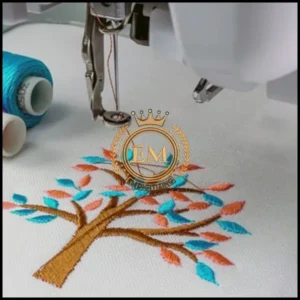
Zu wenige Stiche, und Ihr Entwurf könnte spärlich und unvollendet aussehen. Bei zu vielen Stichen könnte es dick und steif werden. Das Finden der richtigen Stichanzahl sorgt dafür, dass Ihre Stickerei elegant aussieht und die Essenz Ihres Designs einfängt.
Berechnung der Stichdichte für optimale Ergebnisse:
Stichdichte geht Hand in Hand mit der Stichzahl. Es bezieht sich auf den Abstand zwischen den einzelnen Stichen und beeinflusst die Dichte oder Dicke der Stickerei.
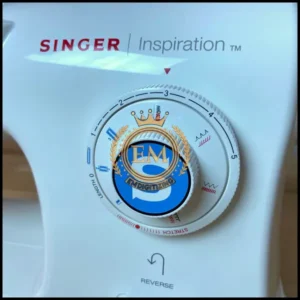
Bei der Berechnung der Stichdichte müssen Faktoren wie berücksichtigt werden Gewebe-Art, Fadenstärke, und den gewünschten visuellen Effekt. Das Finden der optimalen Stichdichte sorgt dafür, dass Ihr Stickdesign klar aussieht, gut definiert, und übersteht den Test der Zeit.
Erkundung der Farbtheorie und Fadenauswahl:
Beim Sticken geht es nicht nur um Formen und Stiche; Farbe spielt eine entscheidende Rolle, wenn es darum geht, Ihre Designs zum Leben zu erwecken.
Let’;Wir untersuchen, wie Farbtheorie und Stickgarnauswahl kann Ihr Stickspiel verbessern.
Der Einfluss der Farbe in der Stickerei:
Farbe hat die Kraft, Emotionen hervorzurufen, visuelles Interesse wecken, und vermitteln Sie Botschaften in Ihrer Stickerei. Farbtheorie verstehen, wie komplementär, analog, oder monochromatische Schemata, kann Ihnen bei der Auswahl von Farben helfen, die Ihr Design harmonieren und aufwerten.
Ganz gleich, ob Ihre Stickerei lebendig und auffällig oder dezent und raffiniert sein soll, Wenn Sie die Farbtheorie beherrschen, können Sie die gewünschte Wirkung erzielen.
Wählen Sie die richtigen Fäden für Ihr Design:
Mit unzähligen verfügbaren Thread-Optionen, Die Wahl der richtigen Motive für Ihr Stickdesign kann überwältigend sein. Faktoren wie Fadengewicht, Material, und Farbechtheit spielen eine Rolle.
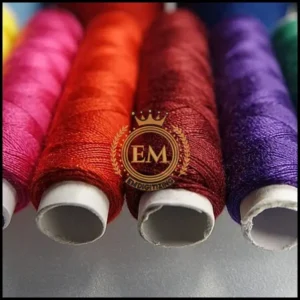
Indem Sie die Eigenschaften verschiedener Stickgarne und deren Kompatibilität mit Ihrem Stoff und Design berücksichtigen, Sie können fundierte Entscheidungen treffen, die zu wunderschön gestickten und langlebigen Stickereien führen.
Berechnen von Platzierung und Größe für Stickmuster:
Berechnungen spielen dabei eine wichtige Rolle Platzierung des Designs und Größe.
Bestimmen der optimalen Platzierung auf dem Stoff:
Deciding where to place your embroidery design on a piece of fabric can be a bit like trying to solve a puzzle. ;
Aber keine Angst, Mathematik kann Ihnen helfen! ;
Mithilfe der Mathematik des Stickens, Sie können die optimale Platzierung Ihrer Stickerei auf dem Stoff bestimmen. Consider factors like the fabric’;s Abmessungen, die gewünschte Größe und Form des Designs, und alle anderen Elemente, die einbezogen werden sollen.
Mit einer Prise Mathematik, you’;Sie werden den perfekten Ort finden, um Ihr Meisterwerk der Stickerei zu präsentieren.
Größenbestimmung und Skalierung von Stickmustern:
Wenn es ums Sticken geht, Die Größe ist wichtig. Whether you’;Sie arbeiten an einem kleinen Flicken oder einem großen Wandteppich, you need to consider the scaling of your design. ;
Here’;Hier kommt die Mathematik ins Spiel, um Ihr Leben zu vereinfachen. Durch die Berechnung der gewünschten Abmessungen und Skalierungsfaktoren, das kannst du ganz einfach Ändern Sie die Größe Ihres Stickdesigns passend zu jedem Projekt.
So, don’;Lassen Sie nicht zu, dass Größenbeschränkungen Ihren Stickstil einschränken – überlassen Sie die Mathematik den Umgang mit den Zahlen, während Sie sich darauf konzentrieren, schöne Stiche zu erstellen.
Zukunft der Mathematik bei der Digitalisierung von Stickmustern:
Beim Sticken ist die Technik kein Unbekannter, und Fortschritte in der Digitalisierung haben die Branche revolutioniert. Mithilfe der Mathematik des Stickens und spezieller Software, Künstler können jetzt komplizierte Designs in umwandeln digitale Stickdateien with ease. ;
Dieser Digitalisierungsprozess ermöglicht eine präzise Kontrolle der Stichplatzierung, Farbveränderungen, and complex patterns. ;
Wenn Sie Schwierigkeiten haben, Stickereien selbst zu digitalisieren, empfehlen wir Ihnen, einen Experten zu beauftragen. So, EMdigitizing ist für Sie da. Wir bieten an Stickerei digitalisieren and vector art services at the most affordable rates possible with fast delivery and high quality. ;
Du kannst bekommen 50% Rabatt auf Ihre allererste Bestellung. So, Worauf wartest du?, Schnappen Sie sich dieses Angebot und lassen Sie Ihrer Fantasie freien Lauf!
Häufig gestellte Fragen:
Maschinenstickerei automatisiert das Sticken mithilfe digitaler Designs, Mit Spezialmaschinen können Sie auf effiziente Weise detaillierte Muster auf Stoff erstellen.
Der Einstieg in das Maschinensticken ist mit modernen Maschinen recht einfach, Allerdings erfordert die Beherrschung komplexer Designs Übung.
Die Stichzahl gibt an, wie viele Stiche insgesamt für ein Stickmuster benötigt werden, Dies wirkt sich sowohl auf die Zeit als auch auf die Thread-Nutzung aus.
Die am häufigsten verwendete Garnstärke für Maschinenstickereien ist 40 Gewicht, kompatibel mit Standardnadeln, und effektiv für die meisten Designs.




